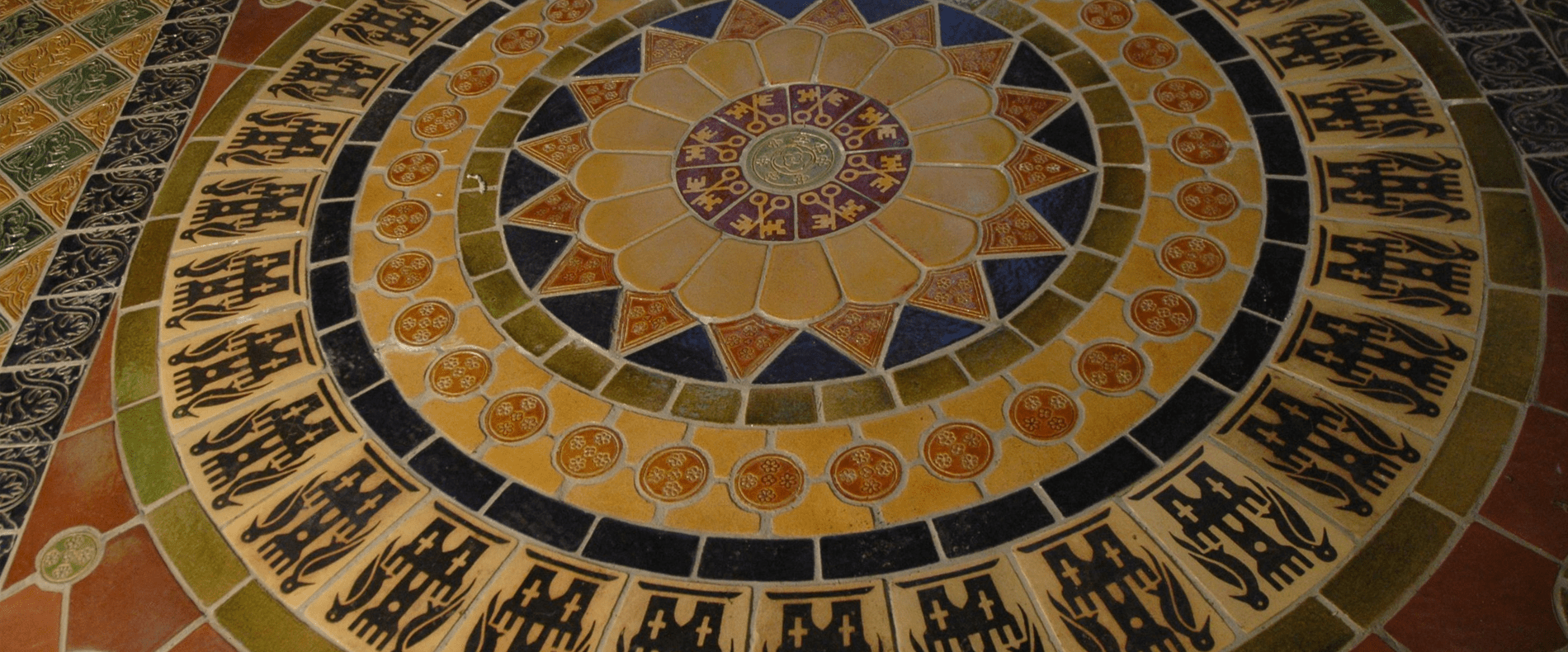Welcome to Cartin Ceramics - Celebrating 40 Years
Rustic Heraldry at Clontarf Castle Dublin
The Battle of Clontarf is commemorated at the Castle with a number of wall pieces like this one, depicting the battle and the arms of a number of families associated with the castle. This once-off piece from 1995 depicting the Houlihan family arms, was modeled in a heavily ‘grogged’ buff stoneware clay and given a light patination with oxides. See under Terracotta.Quays Bar Detail Dublin
Here is one of the vertical panels at the main corner entrance to the Quays Bar at Temple Bar Dublin. In the past it was commonplace to see the initials or the logo of the proprietor woven into the ceramic or stone of an exterior, here we have incorporated the cross of the Fitzgerald family coat of arms. For more see under Faience.North Earl Street/Marlborough Street Window Pediments
These two adjoining buildings on the corner of North Earl Street and Marlborough had to have architraves, corbels, and pediments reinstated on twelve windows. It was thought that the corner building dated from the 19th century, but it was found to be from the 18th, with the window surrounds being added perhaps in the 1860s. We had to work from poor photographs, as no salvaged pieces from these surrounds were available. This meant that we had to work from scratch, making shop-drawings, masters and moulds, and casting in lime, sand, and cement, reinforced with fibre and stainless-steel rods. See under ancillary work.Commemorative Science Plaque New Ross Wexford
We designed and manufactured this plaque for The National Committee for Commemorative Plaques in Science and Technology. This one is in honour of Wexford man Bartholomew Lloyd 1772-1837 and is at the Tholsel in New Ross. This ceramic plaque, which is housed in a bronze ring, is one of a series of about 200 that are being erected by County Councils and other bodies throughout the country, in recognition of contributions to Irish science over the course of the last few centuries. See under Signage & LetteringBaggot Inn Dublin
A portion of the richly glazed counter front fitting intended for the new Baggot Inn, from the late 90s. Over the years we have manufactured a number of ceramic counter fronts like this one, which is loosely modelled on a late 19th century butchers’ shop counter front, still visible at 13 Lower Baggot Street. For more see under Faience.Stephen’s Green / Dawson Street Heraldic Panels
Five panels on this building at the corner of Stephen’s Green and Dawson Street dating, we think from the twenties or thirties, had to be reproduced as part of a major refurbishment inside and out. The panel here presented to us was in a number of pieces and in a fragile state, and under several heavy layers of paint. I suspect that this panel was copied from somewhere else, the modelling is quite poor, and it is a very tight fit for this recess. We reassembled the panel on the bench, filling in the missing pieces to create a master, from which we made a large working mould. See under Ancillary work.Drimnagh Castle Great Hall Floor
In the early 1990s we were asked by Peter Pearson of An Taisce and The Drimnagh Castle Restoration Project, to research and manufacture an appropriate medieval pavement for the Great Hall. Here is a detail of the floor as seen from the minstrel’s gallery. For more detail please see under Medieval Floor Tiles.Sinnott’s Bar Mosaic St Stephen’s Green
In the late 1980’s the old Sinnott’s Bar was re-established, under the new St Stephen’s Green Shopping Centre, on South King Street. As part of that re-establishment we were asked to design a name panel in traditional mosaic, for the main entrance stairs landing. The layout of this panel was influenced by the many period pub and shopfront entrance mosaics around the city of Dublin and elsewhere in Ireland. See under Mosaic.Medieval Floor at Swords Castle
We were asked by Fingal County Council to reproduce a 14th century floor for the ongoing restoration at Swords Castle County Dublin. With reference to tiles excavated at the castle and tiles from other Irish locations, and working with the specialist architect, we created this special floor over a number of months. This line-impressed four-petal pattern, was excavated here at the castle, and was also found at three locations in Dublin and in County Waterford.Cookie Policy
This website uses cookies that are necessary to its functioning and required to achieve the purposes illustrated in the privacy policy. By accepting this OR scrolling this page OR continuing to browse, you agree to our privacy policy.
















